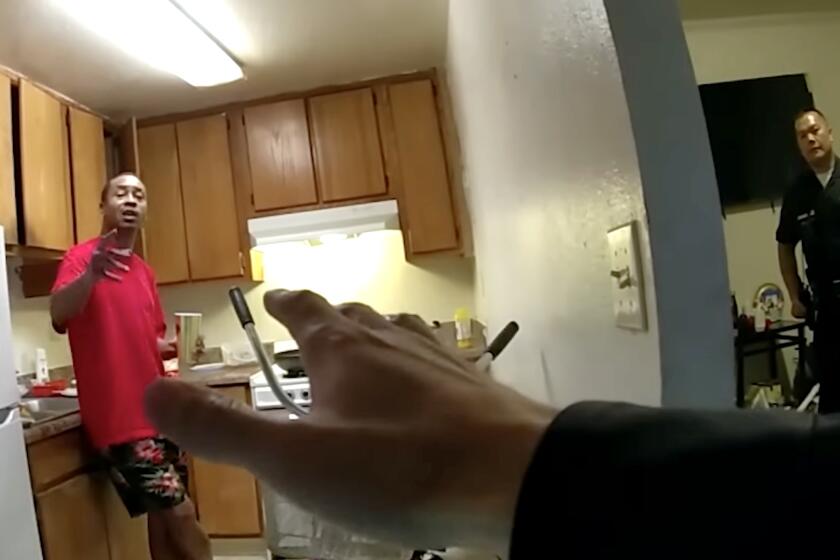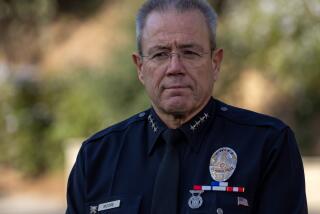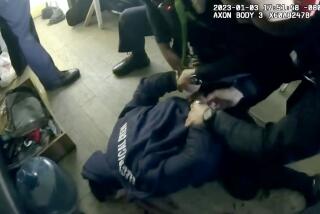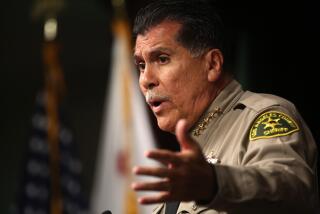Opinion: All too often, police shootings show the perils of ‘de-escalation’
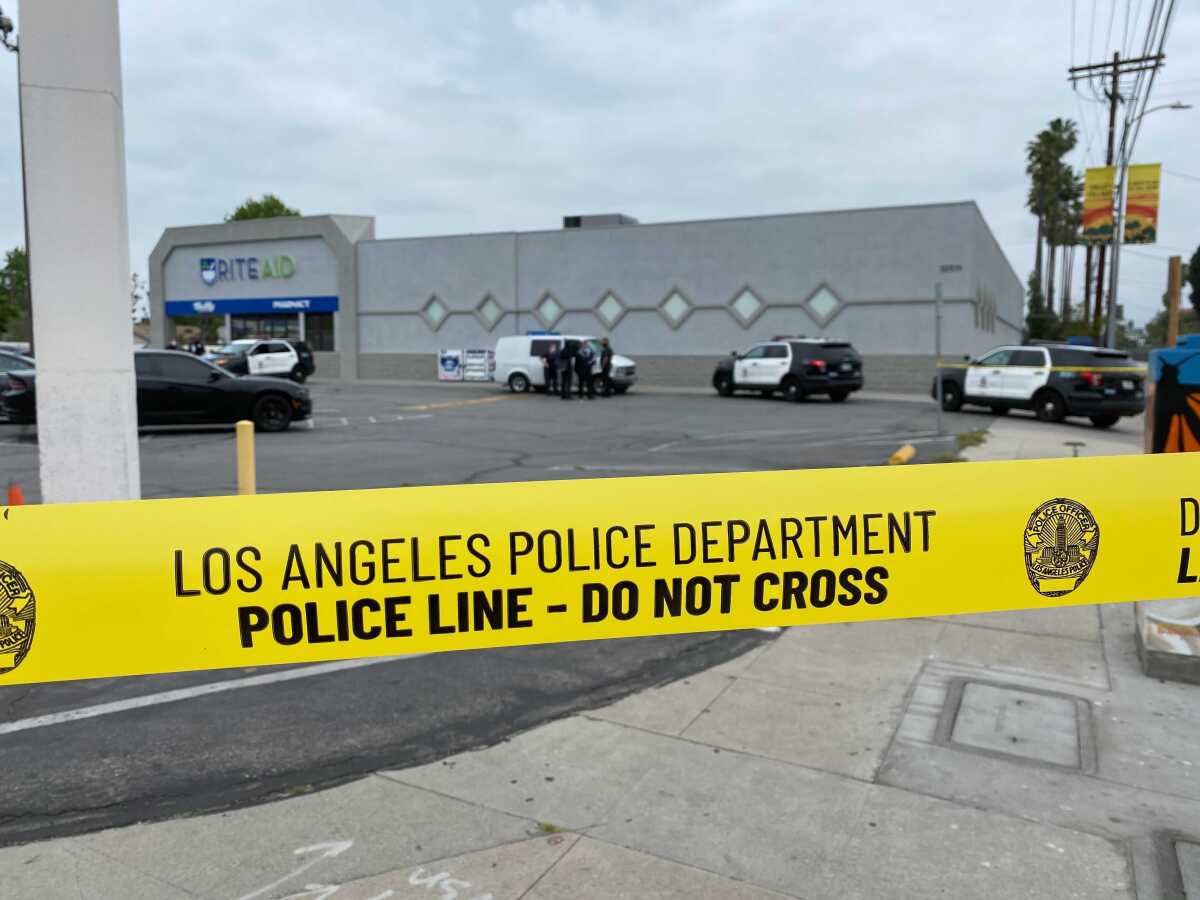
Recent reporting has highlighted the prevalence of shootings by police of people wielding knives and other edged weapons. These cases, often involving individuals in crisis, show two deadly problems: There are limits to what “de-escalation” can accomplish. And officers too often hesitate to use nonlethal force, allowing standoffs to spiral out of control.
Across the country in recent years, officers often seem reluctant to use legitimate force to end a standoff incident when verbal attempts fail to inspire the subject to give up. This hesitation to use even nonlethal weapons — in situations that clearly call for them — often leads to a police shooting, because at some point as de-escalation efforts drag on fruitlessly, suspects may suddenly attack.
Our failure to provide mental health care and proper emergency response leads directly to the needless deaths at the hands of police.
People outside law enforcement sometimes have the impression that if only officers would consistently try to de-escalate standoffs with disturbed individuals, shootings could always be avoided — as though de-escalation were a miracle cure. But there is no miracle cure.
To be sure, de-escalation is a crucial tool for police officers. It is one of the first things I learned as a rookie cop in 1976: Talk instead of fight, if the situation allows the choice. The hope in engaging the resisting subject in effective communications is to lower the intensity of the incident and persuade him or her to submit. It works when it works (which is the norm), and it doesn’t work when it doesn’t. This is where the deadly mistake often lies: recognizing that de-escalation is not working, but being reluctant to use nonlethal force because of fear of the administrative, legal and media aftermath.
A Times analysis shows that LAPD officers continue to open fire despite policies intended to reduce shootings of people who hold a knife or other sharp weapon during a behavioral crisis.
One sees the pattern when police are in a standoff with someone who is armed with a knife. The norm would be for officers to keep their distance, to talk to the individual and listen, to keep communication going as an effort to resolve the situation peacefully. Instead, with the best of intentions, officers “talk the person to death.” When police fail to recognize that talk isn’t working, then officers decline to use nonlethal means such as Tasers to subdue an armed individual, the result often goes the other way: The individual grows more agitated the longer the standoff drags on and charges with the knife at officers or bystanders. This is when shootings occur.
If only officers had abandoned de-escalation on their own terms instead of waiting for the suspect to end it by attacking. If only the officers had used a Taser or other nonlethal option and saved a life — not to mention avoided an expensive shooting investigation and litigation — instead of “talking the person to death.”
As a longtime consultant on police use of force, I believe that officers should use talk in most situations but must assess each case on its own merits for how long they will talk without acting. It seems likely to me that officers have become gun shy because so many colleagues have faced backlash after shootings, but no one’s interest is served by extending this attitude to nonlethal force. Don’t let an overemphasis on de-escalation put civilians’ and officers’ lives at risk. Don’t hesitate to use tools such as Tasers and other force options when appropriate. Fewer and less severe injuries from nonlethal weapons are preferable to avoidable shootings.
A hope that all police standoffs could end with talk is unrealistic. But can most end with talk or nonlethal means? Absolutely — and in fact most standoffs already do. The exceptions that become shootings are the cases that make the headlines. We can make those exceptions more rare with better policy and training and a cultural shift that encourages use of nonlethal weapons at the right moments.
The public and the media have a role to play. Just as public pressure and equipping officers with a variety of nonlethal weapons have contributed to reducing the frequency of police shootings compared with decades ago, public support can make a difference for officers and departments that use lower levels of force — before a standoff situation becomes a shooting.
Greg Meyer, an expert on police use of force, is a retired Los Angeles Police Department captain who conducted the department’s nonlethal weapons research, testing and training in 1979-80.
More to Read
A cure for the common opinion
Get thought-provoking perspectives with our weekly newsletter.
You may occasionally receive promotional content from the Los Angeles Times.
